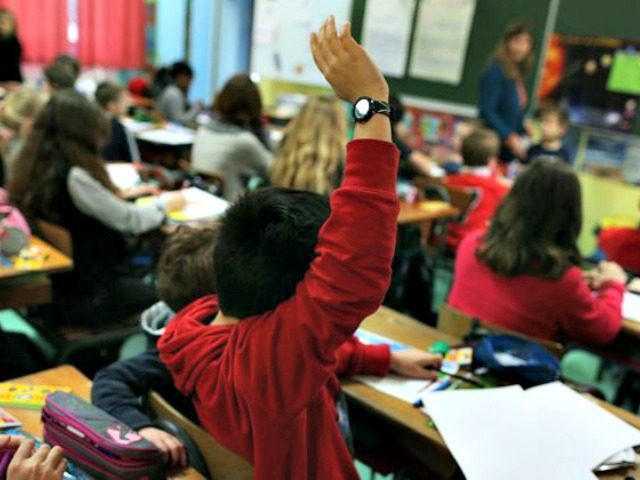Some parents hope their children will experience a challenging math and reading curriculum during the new academic year, but many school staff and administrators are focused on social and emotional learning, and how to create “trauma-sensitive” classrooms.
“We’re in an all-fired hurry because there’s this ‘trauma’ thing and we have to help our kids,” said Melissa Sadin, according to Education Week. Sadin is the director of the Creating Trauma-Sensitive Schools Initiative, a national group that trains staff and administrators in schools and districts.
“Yes, but you have to do it correctly, and nobody learns it in a day,” she added.
Today, K-12 public education in the U.S. is all about inclusion, equity, and how to create environments that are calming to, what administrators and teachers are told, the 45 percent of U.S. children who have experienced at least one “adverse child experience (ACE).”
“Economic hardship and divorce or separation of a parent or guardian are the most common ACEs reported nationally, and in all states,” says Child Trends, a group that conducts research and evaluates programs.
Researchers at Child Trends recommend the use of “trauma-informed approaches” to promote resilience when working with children in school and day care settings.
Education Week reported recently on the experience of Tacora Snell, a fifth-grade math and science teacher in Washington, D.C.
According to the report, Snell said she begins speaking with her math and science students at the start of the school year about “vocalizing their emotions.”
When students become visibly frustrated, she takes them aside and says to them, “You’re angry – you have every right to that emotion – but how could we have dealt with that differently?”
Snell said her goal is to develop her students’ social-emotional skills because, as Education Week notes, “some research has linked focusing on these social-emotional competencies to higher academic performance and better outcomes outside of school.”
According to the Education Week Research Center, 78 percent of teachers say it is part of their job “to help students develop strong social and emotional skills,” yet many teachers do not feel equipped to handle students’ mental health issues.
Lisa Dolan, who leads the district trauma-sensitive schooling initiative in Spotsylvania County, Virginia, said:
In some schools you might see a ‘calm corner’ in the classroom, or time in the day for brain breaks, or mindfulness. But the really big stuff you don’t see. It’s a mindset, a cultural shift away from reacting to students in a punitive way to asking questions about what has happened, to understanding and nurturing.
With the focus on social and emotional learning, parents could find that, at the start of their child’s classes, teachers will check in with students about how they are feeling. For young students, each feeling may be associated with a different color: for example, blue for sad; yellow for nervous; and red for angry.
“Third-grade teacher Matt Kristoff meets each student as they arrive with a special greeting—from a handshake to a hug to a complicated hand-dance—that the student created at the start of the year,” Education Week observed in the school district of Bethlehem, New Hampshire.
However, Karen Effrem, M.D., president of Education Liberty Watch, and attorney and independent researcher Jane Robbins, wrote at the Federalist the social and emotional learning (SEL) “fad” actually “doubles down on failed education fads of the past.”
“In a nutshell, it’s the latest fad to send the same old message pushed by progressives for more than a century,” they noted, “that education should focus less on knowledge of academic content and more on student attitudes, mindsets, values, and behaviors.”
The authors pointed out that SEL is actually promoted by the federal government and pushed on state and local education systems through accountability requirements for receiving federal funds.
Effrem and Robbins asserted:
True to the historical playbook, proponents present SEL as the transformational tool that will propel students to greater academic achievement and personal fulfillment. The scientific and academic evidence for these enthusiastic claims, however, is thin to non-existent. This does not even address SEL’s significant risks to student privacy and health.
The authors added that SEL is much more than giving students encouragement to do well. For example, who decides which attitudes and values are the “right” ones students should adopt?
“Despite the ongoing lack of any reliable, objective, research-based method to measure or assess a student’s personality, values, and mindset, national spending in SEL in K-12 public schools already tops $30 billion annually and is likely to increase,” Effrem and Robbins said, adding that it is time for schools to end the distracting fads and get back to their true purpose.
“[P]ublic education should turn its attention to promoting genuine academic achievement by focusing on curricula that are locally derived and controlled,” they concluded. “If we start there, the results will continue to be far better than those produced by faddish pop psychology and diluted academic content.”

COMMENTS
Please let us know if you're having issues with commenting.